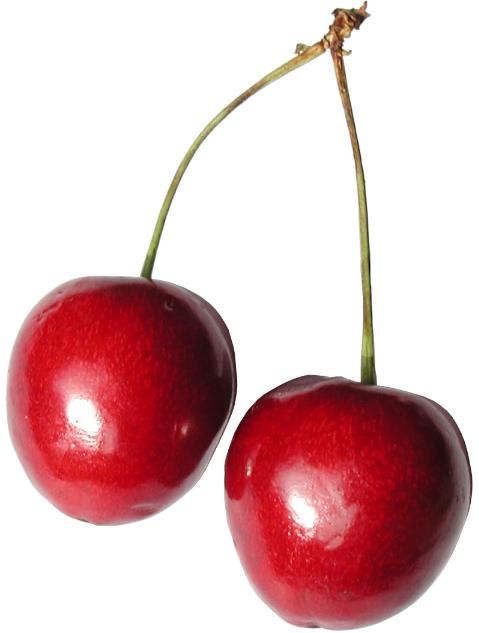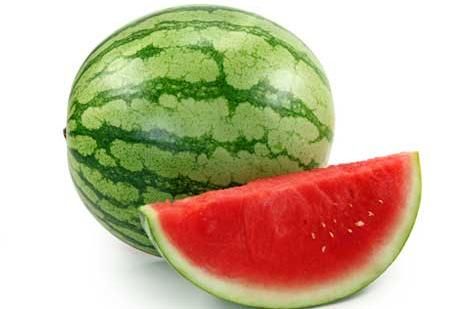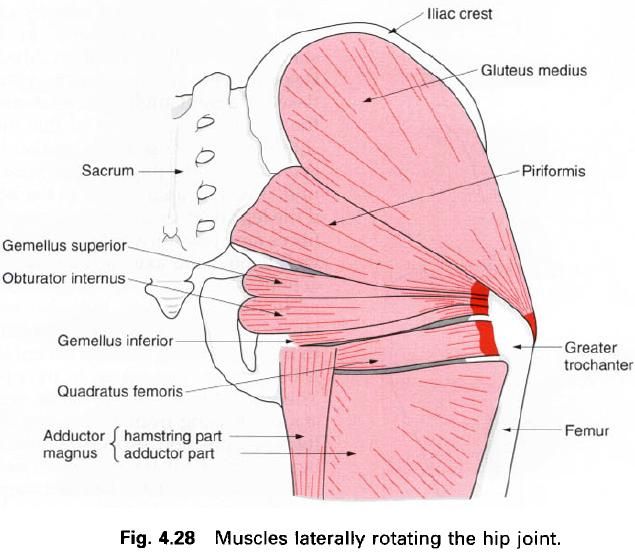30. 4. 2013.
Best headers of all time
Ознаке:
Goals
26. 4. 2013.
Raspberry
Health benefits of raspberries
-
Delicious raspberries are low in calories and
saturated fats but are rich source of dietary fiber and antioxidants. 100 g
berries contain just 52 calories but provide 6.5 g of fiber (16% of daily
recommended intake).
-
Raspberries have significantly high levels of
phenolic flavonoid phytochemicals such as anthocyanins, ellagic acid
(tannin), quercetin, gallic acid, cyanidins, pelargonidins, catechins,
kaempferol and salicylic acid. Scientific studies show that these
antioxidant compounds in these berries have potential health benefits against
cancer, aging, inflammation, and neuro-degenerative diseases.
-
Xylitol is a low-calorie sugar substitute
extracted from raspberries. A teaspoonful of xylitol contains just 9.6 calories
as compared to that of sugar, which has 15 calories. Xylitol absorbs more
slowly in the intestines than sugar and does not contribute to high glycemic
index, and thus, can be helpful in diabetics.
-
Fresh raspberries are an excellent source of
vitamin-C, which is also a powerful natural antioxidant. 100 g berries
provide 26.2 mg or about 47% of DRI of vitamin C. Consumption of fruits rich in
vitamin C helps the body develop resistance against infectious agents, counter
inflammation, and scavenge harmful free radicals.
-
Raspberry contains anti-oxidant vitamins like
vitamin A, and vitamin E. In addition to the above-mentioned antioxidants, is
also rich in several other health promoting flavonoid poly phenolic
antioxidants such as lutein, zea-xanthin, and ß-carotene in small
amounts. Altogether, these compounds help act as protective scavengers against
oxygen-derived free radicals and reactive oxygen species (ROS) that play a role
in aging and various disease processes.
-
Raspberry has an ORAC value (oxygen
radical absorbance capacity) of about 4900 per 100 grams, crediting it among
the top-ranked ORAC fruits.
-
Raspberries contain a good amount of minerals
like potassium, manganese, copper, iron and magnesium. Potassium is an
important component of cell and body fluids that helps controlling heart rate
and blood pressure. Manganese is used by the body as a co-factor for the
antioxidant enzyme, superoxide dismutase. Copper is required in the
production of red blood cells.
-
They are rich in B-complex group of vitamins and
vitamin K. The berries contain very good amounts of vitamin B6, niacin,
riboflavin, and folic acid. These vitamins are function as co-factors and help
body in the metabolism of carbohydrates, protein and fats.
Ознаке:
Nutrition
17. 4. 2013.
Grapefruit
Health benefits
1)
Delicious, grapefruit is very low in
calories, consists of just 42 calories per 100 g. Nonetheless; it is rich in
dietary insoluble fiber pectin, which by acting as a bulk laxative helps
to protect the colon mucous membrane by decreasing exposure time to toxic
substances in the colon as well as binding to cancer-causing chemicals in the
colon.
2)
Pectin has also been shown to reduce
blood cholesterol levels by decreasing re-absorption of cholesterol binding
bile acids in the colon.
3)
The fruit contains very good levels
of vitamin-A (provides about 1150 IU
per 100g), and flavonoid antioxidants such as naringenin, and naringin.
Besides, it is a moderate source of lycopene, beta-carotene,
xanthin and lutein. Studies suggest that these compounds have antioxidant
properties and are essential for vision. The total antioxidant strength
measured in terms of oxygen radical absorbance capacity (ORAC) of grapefruit is 1548 µmol TE/100 g.
4)
Further, vitamin A is also required maintaining healthy mucus membranes and
skin. Consumption of natural fruits rich in vitamin-A,
and flavonoids helps to protect from lung and oral cavity cancers.
5)
It is an excellent source of
antioxidant vitamin-C; providing about 52% of DRI. Vitamin-C is a
powerful natural anti-oxidant and helps the body develop resistance against
infectious agents and scavenge harmful free radicals. It, furthermore, is
required for the maintenance of healthy connective tissue and aids in early
wound healing. It also facilitates dietary iron absorption from the intestine.
6)
100 g of fresh fruit contains about
135 mg of potassium electrolyte. Potassium is an important component of
cell and body fluids, helps controlling heart rate and blood pressure through
countering sodium effects.
7)
Red varieties of grapefruits are
especially rich in the most powerful flavonoid antioxidant, lycopene.
Studies have shown that lycopene protects skin damage from UV rays, and offers
protection against prostate cancer.
8)
Additionally, it contains moderate
levels of B-complex group of vitamins such as folates, riboflavin, pyridoxine, and thiamin in addition to some
resourceful minerals such as iron,
calcium, copper, and phosphorus.
Ознаке:
Nutrition
11. 4. 2013.
Grapes
In structure, each
berry features semi-translucent flesh encased in a smooth, thin skin. Some
varieties contain edible seeds, while others are seedless. The color to the
fruit is because of the presence of poly-phenolic pigments in them. Red or
purple berries are rich in anthocyanins while white-green berries contain more
of tannins, especially, catechin. Interestingly, these
antioxidant compounds are densely concentrated on the skin and seeds!
Health benefits of grapes
- Grapes are rich in polyphenolic phytochemical
compound resveratrol. Resveratrol is one of the powerful anti-oxidant,
which has been found to play a protective role against cancers of colon and
prostate, coronary heart disease (CHD), degenerative nerve disease, Alzheimer's
disease and viral/ fungal infections.
- Resveratrol reduces stroke risk by
altering the molecular mechanisms in the blood vessels. It does so firstly by
reducing susceptibility of blood vessel damage through decreased activity
of angiotensin (a systemic hormone
causing blood vessel constriction that would otherwise elevate blood pressure)
and secondly, through increased production of the vasodilator substance, nitric
oxide (a beneficial compound that causes relaxation of blood vessels).
- Anthocyanins are another class of
polyphenolic anti-oxidants present abundantly in the red grapes. These
phyto-chemicals have been found to have an anti-allergic, anti-inflammatory,
anti-microbial, as well as anti-cancer activity.
- Catechins, a type of flavonoid tannin
group of anti-oxidants, found in the white/green varieties have also shown to
possess these health-protective functions.
- In
addition, the berries are very low in calories. 100 g fresh grapes just provide
69 calories but zero cholesterol levels.
- Grapes are rich source of micronutrient
minerals like copper, iron and manganese. Copper and manganese are an essential
co-factor of antioxidant enzyme, superoxide dismutase. Iron is especially
concentrated more in raisins. In addition, 100 g of fresh grapes contain
about 191 mg of health benefiting electrolyte, potassium.
- They are an also good source of vitamin-C,
vitamin A, vitamin K, carotenes, B-complex vitamins such as pyridoxine,
riboflavin, and thiamin.
Ознаке:
Nutrition
9. 4. 2013.
Cherry
Health benefits of cherry fruit
- Cherries are one of the very low calorie
fruits; however, are rich source of nutrients, vitamins, and minerals. Both
sweet as well as tart cherries are packed with numerous health benefiting
compounds that are essential for wellness.
- Cherries are pigment rich fruits. These
pigments, in fact, are polyphenolic flavonoid compounds known as anthocyanin
glycosides. Anthocyanins are red, purple or blue pigments found in many
fruits and vegetables, especially concentrated in their skin, known to have
powerful anti-oxidant properties.
- Scientific studies have shown that
anthocyanins in the cherries are found to act like anti-inflammatory agents by
blocking the actions of cyclooxygenase-1, and 2 enzymes. Thus, consumption of
cherries has potential health effects against chronic painful episodes such as
gout arthritis, fibromyalgia (painful muscle condition) and sports injuries.
- Research studies also suggest that
anti-oxidant compounds in tart cherries help the human body to fight against
cancers, aging and neurological diseases, and pre-diabetes condition.
- Cherry fruits are very rich in stable anti-oxidant
melatonin. Melatonin can cross the blood-brain barrier easily and
produces soothing effects on the brain neurons, calming down nervous system
irritability, which helps relieve neurosis, insomnia and headache conditions.
- Further, they are also good source of
minerals such as potassium, iron, zinc, copper and manganese. Potassium is a
heart-healthy mineral; an important component of cell and body fluids that
regulate heart rate and blood pressure.
- The fruits, especially tart cherries are
exceptionally rich in health promoting flavonoid poly phenolic anti-oxidants
such as lutein, zea-xanthin and beta carotene. These compounds
act as protective scavengers against harmful free radicals and reactive oxygen
species (ROS) that play a role in aging, cancers and various disease processes.
- Anti-inflammatory property of cherries has
been found effective in reducing heart-disease risk factors by scavenging
action against free radicals.
- Acerola or West
Indian cherry has exceptionally very high levels of vitamin-C (1677.6 mg
per 100 g or 2796 % of RDA) and vitamin-A (767 IU per 100 g).
Ознаке:
Nutrition
6. 4. 2013.
Watermelon
Want to quench thirst and re-boost your body with anti-oxidant
lycopene and vitamin-A? Watermelon has everything
you need to beat the scorching summer heat. Wonderfully delicious,
thirst-quenching melons are the great source of much-needed water and
electrolytes to beat the tropical summer temperatures. Wanna fight against tropical temperatures? This represents a perfect choice for you.
Health benefits of watermelon
- Rich in
electrolytes and water content, melons are nature’s gift to beat tropical
summer thirst.
- Watermelons are
very low in calories (just 30 calories per 100 g) and fats yet very rich source
of numerous health promoting phyto-nutrients and anti-oxidants that are
essential for optimum health.
- Watermelon is an
excellent source of Vitamin-A, which is a powerful natural anti-oxidant.
100 g fresh fruit provides 569 mg or 19% of daily-required levels of this
vitamin. It is essential for vision and immunity. Vitamin-A is also required
for maintaining healthy mucus membranes and skin. Consumption of natural fruits
rich in vitamin-A is known to protect from lung and oral cavity cancers.
- It is also rich in
anti-oxidant flavonoids like lycopene, beta-carotene, lutein, zeaxanthin and
cryptoxanthin. These antioxidants are found to offer protection against
colon, prostate, breast, endometrial, lung, and pancreatic cancers.
Phyto-chemicals present in watermelon like lycopene and carotenoids have the
ability to help protect cells and other structures in the body from oxygen-free
radicals.
- Watermelon is an
excellent source of carotenoid pigment, lycopene and indeed, superior to
raw red tomato. 100g of fresh melon provides 4532 µg lycopene, whereas only
2573 µg in tomatoes. Studies suggest that lycopene offer certain protection to
skin from harmful UV rays.
- Watermelon fruit
is a good source of potassium. Potassium is an important component of cell and
body fluids that helps controlling heart rate and blood pressure; It thus
offers protection against stroke and coronary heart diseases.
- Furthermore, it
contains a good amount of pyridoxine, thiamin, vitamin-C, and manganese.
Consumption of foods rich in vitamin-C helps the body develop resistance
against infectious agents and scavenge harmful oxygen-free radicals. Manganese
is used by the body as a co-factor for the antioxidant enzyme, superoxide
dismutase.
- Total measured
antioxidant strength (ORAC value) of
watermelon is 142 µmol TE/100 g.
Ознаке:
Nutrition
Apple
Benefits
- Delicious and crunchy apple fruit is notable
for its impressive list of phyto-nutrients, and anti-oxidants. Studies suggest
that its components are essential for normal growth, development and overall
well-being.
- Apples are low in calories; 100 g of fresh
fruit slices provide only 50 calories. They, however, contain no saturated fats or cholesterol. Nonetheless, the
fruit is rich in dietary fiber, which helps prevent absorption of dietary-LDL
or bad cholesterol in the gut. The fiber also saves the colon mucous membrane
from exposure to toxic substances by binding to cancer-causing chemicals inside
the colon.
- Apples are rich in antioxidant
phyto-nutrients flavonoids and polyphenolics. The total measured
anti-oxidant strength (ORAC value) of 100 g apple fruit is 5900 TE. Some
of the important flavonoids in apples are quercetin, epicatechin, and procyanidin
B2. Additionally, they are also good in tartaric acid that gives
tart flavor to them. Altogether, these compounds help the body protect from
deleterious effects of free radicals.
- Apple fruit contains good quantities of vitamin-C
and beta-carotene. Vitamin C
is a powerful natural antioxidant. Consumption of foods rich in vitamin C helps the body develop
resistance against infectious agents and scavenge harmful, pro-inflammatory
free radicals from the body.
- Further, apple fruit is a good source of
B-complex vitamins such as riboflavin,
thiamin, and pyridoxine (vitamin B6). Together these vitamins help as
co-factors for enzymes in metabolism as well as in various synthetic functions
inside the body.
- Apple also contains a small amount of
minerals like potassium, phosphorus,
and calcium. Potassium is an important component of cell and body fluids helps
controlling heart rate and blood pressure; thus, counters the bad influences of
sodium.
Ознаке:
Nutrition
5. 4. 2013.
Orange
Oranges are very well choice for every
athlete, especially if he/she are trying to decrease your weight. Here is why:
1) Nutrients in oranges are plentiful and
diverse. The fruit is low in calories, contains no saturated fats or
cholesterol, but is rich in dietary fiber, pectin, which
is very effective in persons with excess body weight. Pectin, by its action as a bulk laxative, helps to protect the
mucous membrane of the colon by decreasing its exposure time to toxic
substances as well as by binding to cancer-causing chemicals in the colon.
Pectin has also been shown to reduce blood
cholesterol levels by decreasing its re-absorption in the colon by binding to bile
acids in the colon.
2) Oranges,
like other citrus fruits, is an excellent source of vitamin C (provides
53.2 mg per 100 g, about 90% of DRI); Vitamin C is a powerful natural antioxidant. Consumption of foods rich in vitamin C helps the body develop
resistance against infectious agents and scavenge harmful,
pro-inflammatory free radicals from the blood.
3) Orange fruit
contains a variety of phytochemicals. Hesperetin, naringin, and naringenin
are flavonoids found in citrus fruits. Naringenin is found to have a bio-active
effect on human health as antioxidant, free radical scavenger,
anti-inflammatory, and immune system modulator. This substance has also been
shown to reduce oxidant injury to DNA in vitro studies. Total antioxidant
strength (ORAC) of oranges (navel variety) is 1819 µmol TE/100 g.
4) Oranges
also contain very good levels of vitamin A, and other flavonoid
antioxidants such as alpha and beta-carotenes, beta-cryptoxanthin,
zea-xanthin and lutein. These compounds are known
to have antioxidant properties. Vitamin A
is also required for maintaining healthy mucus membranes and skin and is
essential for vision. Consumption of natural fruits rich in flavonoids helps
the body to protect from lung and oral cavity cancers.
5) It is also a very good source of B-complex vitamins such as thiamin, pyridoxine, and folates.
These vitamins are essential in the sense that body requires them from external
sources to replenish.
6) Orange
fruit also contains a very good amount of minerals like potassium and calcium. Potassium is an important component of
cell and body fluids that helps control heart rate and blood pressure through
countering sodium actions.
Citrus fruits, as
such, have long been valued for their wholesome nutritious and antioxidant
properties. It is scientifically established that citrus fruits, especially
oranges, by virtue of their richness in vitamins and minerals, have many proven
health benefits. Moreover, it is now beginning to be appreciated that the other
biologically active, non-nutrient compounds in the citrus fruits such as phyto-chemical
antioxidants, soluble and insoluble dietary fiber helps in cutting
risk for cancers, chronic diseases like arthritis, obesity, and coronary heart
diseases.
Ознаке:
Nutrition
Muscles producing movement of the knee joint
The main movement of the knee joint is flexion
and extension. With the knee in a semiflexed position and the foot off the ground, there is, in addition, medial and lateral
rotation of the tibia with respect to
the femur. If the feet are on the
ground when the knees are flexed, the rotation at the knee joint is taken up by
the femur, which rotates about a
vertical axis, running approximately through the intercondylar eminence. This
allows the upper part of the femur to
move from side to side as in moving along sideways from one seat to another.
The movement between the patella and the pattelar surface of the femur must also be taken into account when considering the
movements of the knee.
Ознаке:
Anatomy
4. 4. 2013.
Muscles laterally rotating the hip joint
Piriformis
Obturator internus
Gemellus superior
Gemelus inferior
Quadratus femoris
Obturator externus
Piriformis
Piriformis is found posterior to the hip joint, being in the same plane as gluteus medius. It is triangular in
shape, with its base in the pelvis and apex in the gluteal region.
Its upper attachment is to the front of the second to fourth sacral
segments, coming between and lateral to the anterior sacral foramina. It
has an additional attachment from the gluteal
surface of the ilium and the pelvic surface of the sacrotuberous ligament as it passes out
of the pelvis through the greater sciatic foramen into the gluteal region. Its
fibres continue to pass downwards, laterally and forwards, narrowing into a
tendon which attaches to the upper border and medial side of the greater
trochanter of the femur. The
fibres run in a straight line from the origin to the insertion through the
greater sciatic foramen.
Nerve
supply
Piriformis is supplied from the anterior rami of the sacral plexus, L5,
S1, 2; and mainly S1. The skin covering this area is supplied by the same nerve
roots but it must be remembered that this is a deep muscle and the gluteus maximus intervenes between the
two.
Action
In the anatomical position this muscle will
certainly be a lateral rotator of the thigh, although it is situated a little
high. However, in the sitting position it is concerned in the important action
of the abduction, and in this particular situation is well positioned for this
action. It is an important muscle in holding the head of the femur in the acetabulum.
Functional
activity
It is well to remember that many times we only
consider the action of a muscle in the anatomical position. In the sitting
position, the pull of muscles changes and the movement produced may bear little
or no relation to the previous action. Piriformis will be particularly
concerned in the following activities:
- abduction when sitting, for example in moving from one chair to another without standing up;
- moving the legs to the outside of a car in preparation for standing up;
- stabilizing the pelvis when the trunk is rotated;
- controlling the balance of the pelvis when standing on a moving bus.
It is not therefore surprising that strain of
this muscle is quite common, but unfortunately easily overlooked.
Palpation
This is not easy as piriformis is situated deep
inside the buttock. Dig your fingers into the buttock just lateral to the sacrum and then push the outside of
the thigh up against the leg of a table or some such resistance; you can feel
then the muscle contract, although it must be remembered that a large part of
the muscle is in the pelvis.
Obturator internus
Obturator internus is again a triangularly
shaped muscle, situated partly in the pelvis and partly in the gluteal region
posterior to the hip joint. It arises
from the internal surface of the obturator membrane and surrounding bony
margin, except at the obturator canal. The bony attachment extends backwards as
far as the pelvic surface of the ilium. The muscle fibres pass laterally,
but mainly backwards towards the lesser sciatic foramen, through which they
pass, narrowing down and becoming tendinous.
As the tendon passes through the lesser sciatic
foramen deep to the sacrotuberous ligament it changes direction to the
sacrotuberous ligament it changes direction to pass forwards and laterally to
insert into the medial surface of the
greater trochanter of the femur in front of and above the
trochanteric fossa. Before attaching to the femur,
the tendon is commonly joined by the tendons of the gemellus superior above,
and the gemellus inferior below. Occasionally these two tendons will insert
into the greater trochanter above and below the tendon of the obturator
internus.
The inner(pelvic) surface of obturator internus
is covered by the obturator fascia, from which arises part of levator ani. As
the tendon of obturator internus turns around the lesser sciatic notch the
surface of the bone in this region is grooved and covered with cartilage. A
bursa intervenes between tendon and cartilage.
Nerve
supply
This muscle is supplied by the nerve to obturator internus, root value
L5, S1, 2. The skin covering this area is mainly supplied by S3.
Action
In the anatomical position this muscle is a
lateral rotator of the thigh pulling the greater trochanter backwards using the
hip joint as the fulcrum. However,
when the hip is flexed to a right
angle, it will pull the upper end of the femur
medially, and therefore the lower end will move laterally as in abduction.
Functional
activity
As in the case of the piriformis, obturator
internus will be used when moving sideways in the seated position, in swinging
the lower limb sideways, as in placing the limb outside a car, and in balancing
and controlling the stability of the trunk when the seated person is being
rocked from side to side. For the same reasons, moving around on the floor or
on a platform, either sitting or crawling will require considerable activity in
this muscle.
Gemellus superior
As obturator internus passes out of the pelvis
around the lesser sciatic notch it is joined by gemellus superior and inferior.
Gemellus superior arises from te gluteal surface of the ischial spine. It runs laterally and
slightly downwards to blend with the
superior aspect of the tendon of the obturator internus. Sometimes its
fibres are prolonged onto the medial surface of the greater trochanter of the femur.
Nerve
supply
The muscle is supplied by the nerve to obturator internus, root value L5, S1, 2.
Gemellus inferior
Gemellus inferior arises from the upper part of the ischial tuberosity. It runs laterally and slightly upwards to blend
with the inferior aspect of the tendon of obturator internus.
Nerve
supply
The muscle is supplied by the nerve to quadratus femoris, root value
L4, 5, S1.
Action
The gemelli aid obturator internus in its
action. As obturator internus turns around the lesser sciatic notch it will
lose some of its power; this will obviously be compensated for by the pull of
the gemelli.
Quadratus femoris
This muscle is situated below gemellus inferior
and above the upper margin of adductor magnus. It is a flat quadrilateral muscle, separated from the hip joint by the obturator externus.
It attaches to the ischial tuberosity just below the lower rim of the acetabulum. The
fibres pass laterally to attach to the quadrate
tubercle situated half way down the intertrochanteric crest of femur and the area of bone surrounding
it.
Nerve
supply
The muscle is supplied by the nerve to quadratus femoris, root value L4, 5, S1.
Action
In the anatomical position quadratus femoris is
obviously a lateral rotator of the hip
joint, but with the hip flexed, it
will act as an abductor of the hip.
Obturator externus
This is a triangular muscle having its muscular
base attached to the outer surface of
the obturator membrane and the
surrounding margins of the pubis and ischium, excluding the area superiorly
around the obturator canal. The muscle fibres converge on to a tendon which
runs in a groove below the acetabulum across the back of the neck of the femur, which it grooves, to insert into
the trochanteric fossa of femur. The
muscle lies deep to quadratus femoris.
Nerve
supply
The muscle is supplied by the posterior branch of the obturator nerve, root value L3, 4.
Action
In the anatomical position obturator externus
laterally rotates the femur. However,
when the hip is flexed it will pull
the upper part of the femur medially
with the lower part passing laterally, as in abduction.
Functional
activity
The functional activity of these muscles must
be considered together. Piriformis, the gemelli, obturator externus and
internus, and quadratus femoris are always considered in the anatomical
position. In this position these muscles will perform an important role in the
control of the pelvis, particularly when only one foot is on the ground and even more so in the walking. They are
responsible, together with gluteus maximus and the posterior part of gluteus medius, in producing lateral rotation of the lower limb in the forward
swing-through phase of gait. In sitting, crawling and turning over when lying
down they will, however, have a completely different role, producing abduction
of the hip and thereby controlling
the movements of the pelvis on the flexed thigh.
Palpation
These muscles are situated deep to the thick gluteus maximus and it is almost
impossible to distinguish the contraction of these muscles through the
overlying muscle tissue, especially as gluteus maximus is usually contracting at the same time. However, overactivity or
strain of these muscles may result in acute tenderness deep to the back of the hip joint; the production of this
pain with the relevant movement is then obvious.
It is difficult to research the actions of
these lateral rotators primarily because of their depth in the gluteal region,
but also because much of their action is concerned with the control of the
movements of the hip and pelvis. Thus
they may be in a state of contraction even when the opposite movement to their primary
action is occurring.
To see these muscles, gluteus maximus must be
removed – the muscles resembling the rungs of a ladder: consequently, they are
often referred to as the ladder of
muscles.
Ознаке:
Anatomy
Пријавите се на:
Постови (Atom)












